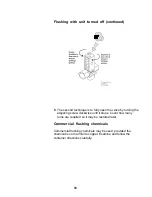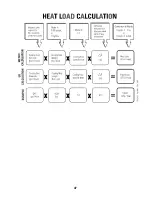
41
Solenoid valve rebuild
NOTE: Many times the solenoid valve can be rebuilt in place,
completely avoiding any brazing and greatly reducing the time
needed for repair.
Rebuild procedure:
See next page for illustration.
1. Recover refrigerant.
2. Remove coil.
3. Remove large nut from valve body.
4. Remove internal valve components.
5. Inspect interior of valve body for cleanliness and lack of burrs
or wear.
6. Disassemble new valve, and transfer components to the
existing valve body.
7. Install large nut onto valve body.
8. Pressurize system and leak check. As the valve is normally
closed, be sure that both sides of the valve are pressurized.
9. Begin evacuation of system.
10. Install coil.
11. Charge system to specification.
12. Test system.
Summary of Contents for NESLAB HX 150
Page 9: ...9 Troubleshooting Chart Weak cooling ...
Page 10: ...10 Troubleshooting Chart Weak cooling continued ...
Page 11: ...11 Troubleshooting Chart Refrigeration pressures ...
Page 42: ...42 ...
Page 47: ...47 ...
Page 51: ...51 ...











































